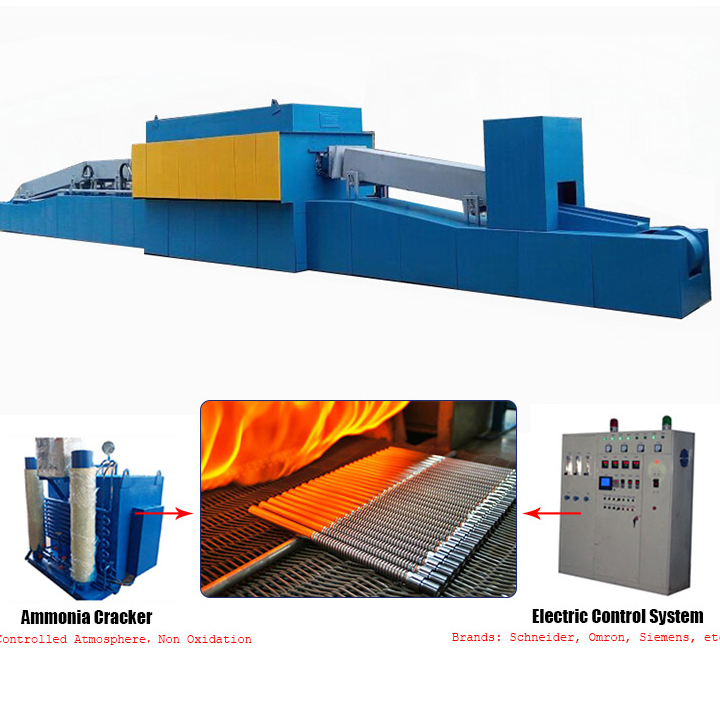Comparison of characteristics of three annealing processes in annealing process
Nov. 27, 2021
Comparison of characteristics of three annealing processes in annealing process
Diffusion annealing (homogenization annealing)
Scope of application: alloy steel ingots and castings.
Objective: to eliminate dendrite segregation caused by and gold crystallization and make the composition uniform, so it is also called homogenization annealing.
Process: heat the ingot or casting above AC1, about 1000 ~ 2000 º C, keep it warm for 10 ~ 15 hours, and then cool it with the furnace.
Features: high temperature and long time heating.
The higher the content of alloying elements in steel, the higher the heating temperature. High temperature heating for a long time is another reason for overheating,
Therefore, after diffusion annealing, one annealing or normalizing is needed to eliminate overheating.
Spheroidizing annealing
Scope of application: mainly used for carbon steel and alloy steel with eutectoid or hypereutectoid composition.
Objective: to spheroidize cementite, reduce hardness, improve cutting performance and prepare for quenching.
Process: heat hypereutectoid steel to about 20 ~ 40 ° C above AC1 for holding time, and then slowly cool it to below 600 ° C for air cooling.
Process features: heating and slow cooling at low temperature.
When the heating temperature exceeds AC1 line, the cementite begins to dissolve, but it does not dissolve. At this time, the sheet cementite gradually breaks into many fine chain or point cementites, which are dispersed and released on the austenitic matrix. At the same time, due to short-time heating at low temperature, austenite
The body composition is also very uneven. Therefore, in the process of slow cooling or isothermal cooling in the future, the original fine deep carbonite particles are used as the starting point
Core, a new core is generated at the place where austenite is enriched, and granular cementite is uniformly formed.
Stress relief annealing (low temperature annealing)
Purpose: to eliminate residual stresses in castings, forgings, weldments, cold stamping parts and machined parts
The force will potentially produce deformation or cracking in later machining or use. Process: slowly heat the workpiece to 600 ~ 650 ° C
, heat preservation time, and then slowly cool down to 200 ° C with the furnace, and then discharge the furnace for air cooling.










